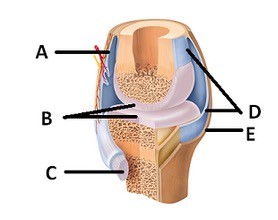Each red blood cell is shaped as a biconcave disk. This allows it to
A) change its shape to squeeze through narrow openings and shrink or swell slightly in response to osmotic conditions.
B) change its shape to squeeze through narrow openings, shrink or swell slightly in response to osmotic conditions, and synthesize new proteins and membrane components readily.
C) shrink or swell slightly in response to osmotic conditions.
D) change its shape to squeeze through narrow openings.
E) synthesize new proteins and membrane components readily.
A) change its shape to squeeze through narrow openings and shrink or swell slightly in response to osmotic conditions.
You might also like to view...
What is the name of the prominence on the medial surface of the ankle?
A. Tibial tuberosity B. Medial condyle C. Medial malleolus D. Calcaneus E. Head of the fibula
The term embryo is used:
a. after the first 8 weeks of pregnancy b. after the blastocyst has implanted in the uterine wall c. during the entire pregnancy d. from fertilization to the end of the eighth week of pregnancy
 What does structure "C" represent on the diagram?
What does structure "C" represent on the diagram?
A. Synovial membrane B. Fibrous capsule C. Articular cartilage D. Tendon E. Bursa
The atomic number of an element is given by the number of electrons in the atom
Indicate whether the statement is true or false.